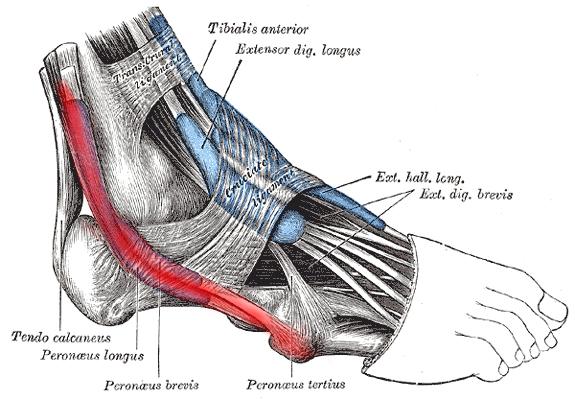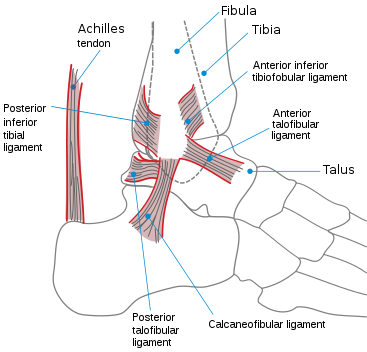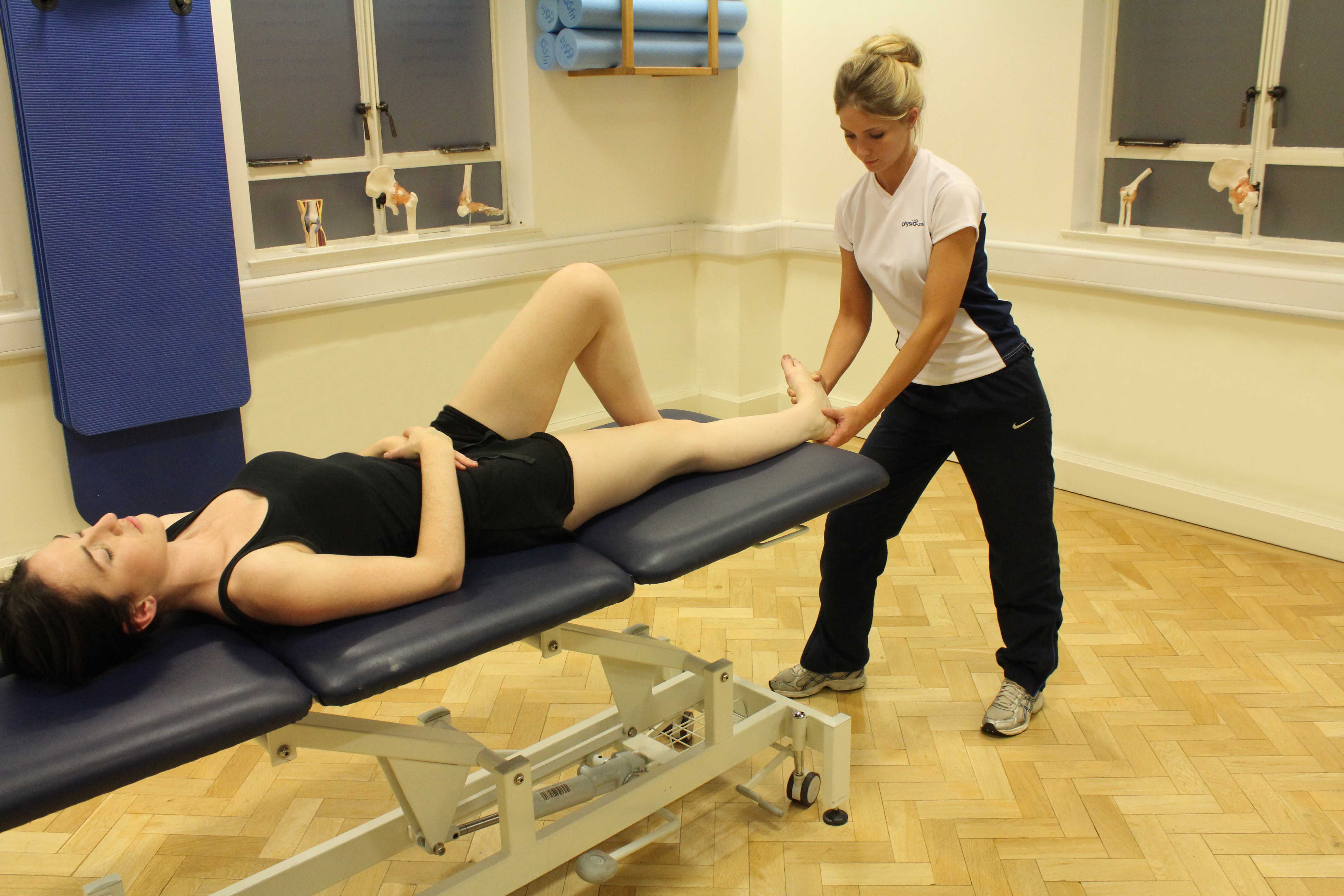nalco group
bone, muscle & joint pain physio
BOOK NOW / WHATSAPP ABOUT YOUR PAIN OR INJURY
- NOVENA 10 Sinaran Drive, Novena Medical Center #10-09, Singapore 307506
- TAMPINES 9 Tampines Grande #01-20 Singapore 528735
- SERANGOON 265 Serangoon Central Drive #04-269 Singapore 550265
Home > Blog > Physiotherapy > Conditions > Tendinopathy > Ankle Pain > Peroneal Tendinopathy Physiotherapy
Peroneal Tendinopathy Physiotherapy

Overuse injuries in sports account for 50% of all injuries. Of these, a majority of overuse injuries occur in runners, with
- 20% of injuries affecting the lower leg
- 15% the ankle
- and 15% the foot
Peroneal tendinopathy is a type of overuse injury that often occurs in athletes, such as in long-distance runners and basketball players. Dancers, people who have had ankle sprains, or those who simply have weak ankles are also often affected.
Peroneal tendinopathy is characterized by an aching along the outside surface of the ankle that worsens with activity, and improves with rest.
Our senior physiotherapists can help relieve symptoms caused by this condition by providing ankle physiotherapy treatments, including stretching and strengthening exercises to help the ankle become more mobile, strong, and stable.
What is Peroneal Tendinopathy?

Peroneal tendinopathy is characterized by an aching pain and swelling in the peroneal tendons located in the lower, outside portion of the ankle. A tendon is soft-tissue that attaches a muscle to a bone.
The muscles involved in this condition are the 2 peroneal muscles in the lower leg, called
- the peroneus longus and
- the peroneus brevis
(In some texts, the muscles are referred to as the fibularis longus and the fibularis brevis.)
The peroneus longus muscle originates on the fibula bone, which is located on the outside of the lower leg. It wraps around the bone on the outside of the ankle (the lateral malleolus) and attaches to the plantar (bottom) aspect of the base of the big toe.
The peroneus brevis muscle also originates on the fibula, but attaches to the base of the fifth toe.
These muscles are responsible for moving the foot in an outward direction, and pointing the toe and foot downward. Together, they help to balance and stabilize the foot and ankle.
Most ankle sprains occur as a result of the ankle rolling inward (inversion type ankle sprain). One reason for this is that the peroneal muscles and tendons are not as strong as the muscles on the inside of the ankle. If these muscles are weak, they may not be able to prevent the ankle from rolling inward.
These same muscles and tendons can also be overworked if the foot isn’t hitting the ground in proper alignment. If the foot hits the ground more on the outside of the foot (supination), the peroneal muscles have to work harder to stabilize the force of gravity with weight-bearing activities.
Proper footwear or orthotics can help with proper foot alignment.
Peroneal tendinopathy will usually worsen with activity, such as running or walking and improve with rest. It is an overuse injury, meaning the tendons can become
- enlarged
- thickened and
- possibly swollen
How Does it Feel?
Symptoms of peroneal tendinopathy include:
- An aching pain on the outside of the ankle, especially with activity
- Lateral (outside) ankle pain that decreases with rest
- Swelling or tenderness to touch behind the ankle bone on the outside of the ankle
- Pain and weakness when actively moving the foot in an outward direction or when pointing it down
- Pain when pushing off the ball of the foot during walking or running
- Pain when walking on a sloped terrain that turns the foot outward
- Pain when stretching the foot in an inward and downward direction
How Is It Diagnosed?
Our senior physiotherapists will perform a thorough evaluation that includes asking about your health history.
We may
- perform strength and motion tests on your ankle
- ask about your job duties and hobbies
- evaluate your gait (how you walk) and
- check for any muscle weakness in the entire leg and in your core
We will also check your posture and evaluate what type of shoes you wear to determine if they support your foot properly.
We will gently touch your ankle in specific areas to determine which tendon or tendons may be inflamed. Special tests may be performed to determine exactly which tendons are involved.
how our senior physiotherapists can help
It is important to get proper treatment for peroneal tendinopathy as soon as it happens. A degenerated tendon that is not treated can begin to tear, causing a more serious condition.
With an early diagnosis, ankle and peroneal tendon physiotherapy can successfully treat peroneal tendinopathy. We will develop a treatment plan specific to your condition and goals.
Your individual physiotherapy treatment program may include:
Pain Management
We will help you identify and avoid painful movements, allowing the inflamed tendon to heal.
may be used for pain management.
Manual Therapy.
We may use manual therapy to gently mobilize the joints in your foot, ankle, and lower leg. Soft-tissue mobilizations may also be performed to
- loosen any tightness
- increase circulation
- relieve
pain
- decrease swelling

You will learn exercises to help the ankle, foot, and toes to move properly, in order to normalize your gait pattern when walking or running.
Stretching exercises will help ease any tightness in the calf muscles and the tissues in the bottom of the foot.
Strengthening Exercises
We will determine which muscle groups require strengthening to enable you to return to walking or running without pain.
Navigating uneven surfaces, such as grass, sand, gravel, or trails requires significant ankle strength to avoid unnecessary stress on the ankle.
We may teach you to perform resistance exercises with
- bands
- weights or
- medicine balls to strengthen the muscles in the ankle, foot, and lower leg.
Functional Training
As your symptoms improve, we will help you return to your previous level of activity and sport. Sport-specific exercises will simulate certain activities.
You may perform single-leg balance exercises or train on uneven surfaces to challenge the muscles that balance and stabilize the ankle.
We will design an individual home-exercise program to perform after formal therapy has ended, to continue building your ankle and foot strength.
Patient Education:
We will recommend proper footwear for the activities you enjoy, so that your foot and ankle have proper support.
It may be necessary to get fitted for a custom foot orthotic (corrective inserts for your shoes) to wear, especially when performing more demanding activities, such as running or walking on uneven surfaces.
You will also learn how to gradually increase and maintain your training regimen to reduce any chance of future injury.
